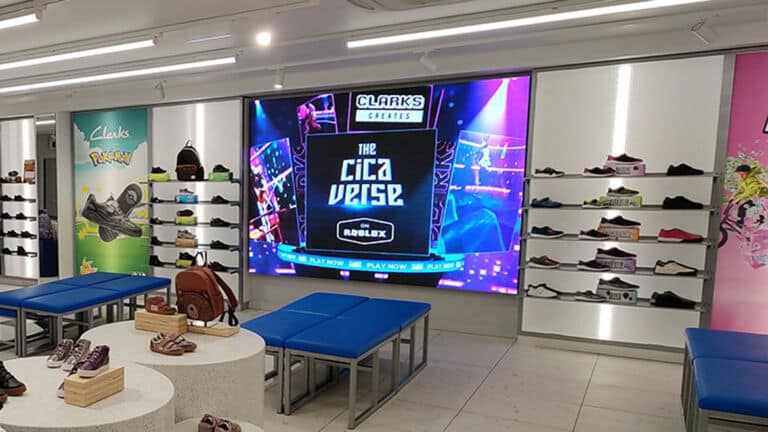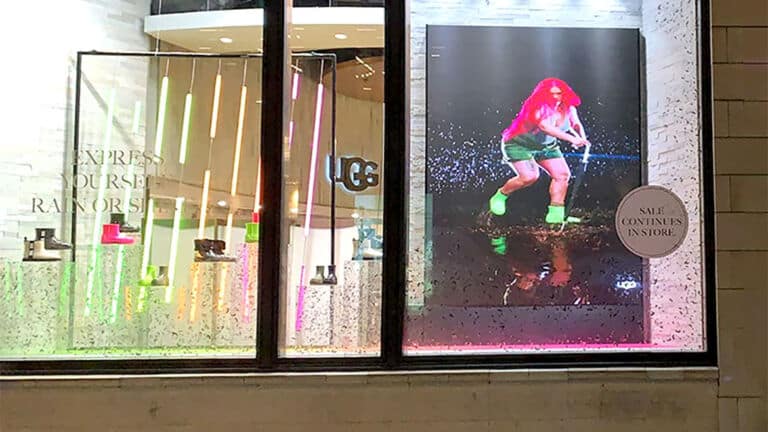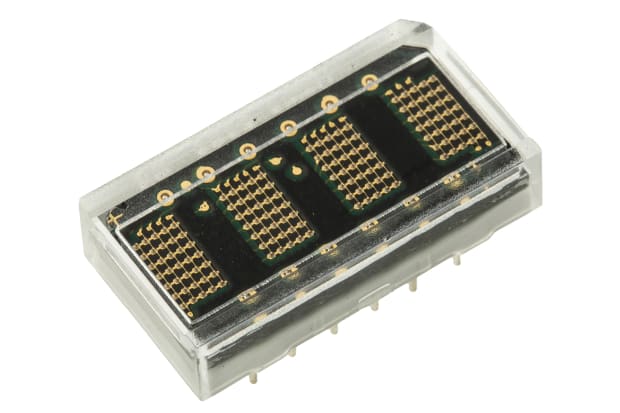Best Ideas On Picking Outdoor Fixed Led Display
Wiki Article
How Important Are The Durability And Weather Resistance When Choosing Led Displays For Outdoor Use?
It is essential to search for LED displays that are durable and weatherproof particularly when they are going to be used outdoors or in high-traffic areas. Here are a few of the reasons they're crucial:
1. Longevity, Cost-Effectiveness
Durability: Durable LCD displays are designed to withstand mechanical stress, including impact, vibrations and other mechanical strains. Displays with a high degree of durability will last longer and reduce the requirement for repairs or replacements. The cost savings will be higher over the course of the course of.
Applications: In settings where displays are exposed to physical damage such as in public spaces, sports arenas, or rental markets the durability of the display will guarantee an investment that lasts for a long time.
2. Outdoor Performance
Weather Resistance Outdoor LED displays have to endure a range of weather conditions including the elements of wind, rain and temperature variations. Weather-resistant displays are designed to operate reliably under these conditions without degradation in performance.
IP Rating The Ingress Protection (IP) rating indicates the degree of protection against dust and water. Outdoor displays should be equipped with at least IP65 protection against dust jets as well as water. This allows the display to be able to stand up to the harsh weather conditions.
Applications: Weather resistance is crucial for outdoor installations such as billboards, stadium screens and digital signage. If the display is damaged in adverse weather conditions, it can lead to costly repairs and interruptions.
3. Temperature Resistance
LED displays are susceptible to extreme temperatures. While cool and hot they could affect the performance of their display. The majority of high-end displays are made to work in a variety of temperatures. They are equipped with heating and cooling systems that ensure optimal performance.
Application: In regions that have extreme climates, such as hot deserts or freezing winters, choosing a display with sufficient temperature resistance will ensure that it operates all the time.
4. Water and Moisture Barrier
Waterproofing: Waterproof LED displays block moisture entry that could lead to short circuits and harm to internal components. It is essential to ensure that the LED display can endure environments that have high humidity or heavy rainfall.
Waterproofing displays in areas near coastlines or water bodies is crucial to extend the life span of the display as well as prevent problems.
5. UV Protection to prolong the life of sunlight
UV Resistance. Exposure to sunlight for long periods of time can cause displays to fade and become less effective. Displays that are UV-resistant have been designed to resist the damaging UV rays' effects. They preserve their appearance and functionality as they age.
Application: In sunny areas or areas where the display is in direct sunlight the need for UV resistance is vital to prevent fading and maintain the image's quality.
6. Safety and Compliance
Environments with Fire Resistance: Some places require that displays contain fire-proof properties in order to comply with safety standards. This is important, especially in areas with high levels of occupancy such as shopping malls and concert halls.
Application: ensuring that your display is compliant with relevant safety standards safeguards your investment and allows you to comply with local regulations. This can help you avoid potential legal issues.
7. Maintenance and downtime reduction
Low Maintenance : Displays that are weatherproof and durable require less frequent maintenance since they tend to be less prone to damage by environmental factors. This can reduce the costs of maintenance and downtime.
Application: In critical applications where downtime is costly or disruptive, such as in transport hubs or emergency information systems, durability and weather resistance guarantee that the display is operational with minimal intervention.
Conclusion:
In order for LED displays to be durable, reliable, and cost-effective, they need to be able to withstand the elements and extreme weather conditions, especially in locations where there is a lot of stress or outside. These factors protect you investment by making sure the display can handle harsh conditions. This reduces the need for maintenance and guarantees consistent performance. When you are researching LED displays, prioritizing the durability and weather resistance is crucial when considering applications where environmental elements have a major impact. Follow the recommended cob led display for website advice including led video wall, led the wall, transparent screen monitor, led screen panels, advertising tvs, rental led display screen, rental led display screen, led wall tv, outdoor led screen, outdoor led screen display and more.

What Is Essential When Selecting Led Displays To View Angles?
The viewing angle is a very important factor to consider when researching LED displays, especially for applications where the display will be viewed from various locations and angles. Here's why the viewing angle is crucial:
1. Uniform Image
Definition: The angle at which a display is viewed a LED display refers to the maximum distance at which the display can be viewed with acceptable visual performance (typically with regard to the brightness and consistency of color). The viewing angles are usually specified both in the vertical and horizontal direction.
It is important to get a larger viewing angle. This ensures the image quality is constant regardless of the position you're relative to your screen. The brightness and color will not be affected by looking at the display from the side, or even from above/below.
2. Audience Experience
The impact of large venues Large venues, such as arenas and concert halls the audience is spread across a large space. Displays with a narrow viewing angle can cause poor visibility and reduced quality of the image for viewers sitting in a sharp angle to the screen. This results in a subpar user experience.
Application: When large-scale displays or events are planned with people within a wide arc around the display, it is important to have a wide angle of view so that everyone can enjoy the clear and vibrant image.
3. Suitability For Public Spaces
In public display applications like shopping malls, transport hubs as well as outdoor advertising, it's important to take into consideration the angle of view, since people will be able to see the display from every direction. A narrow view angle will hinder the effectiveness and involvement of the display.
Application Wide viewing angles are great for digital signs in public spaces. They maximize their reach and guarantee that the content will be prominent and appealing at all times.
4. Content Consistency
Uniformity in Brightness and Color - Displays that aren't uniform in color or brightness view angle may exhibit color shifting or a brightness drop when it is viewed from a different angle. This is especially problematic when it comes to content that is brand-related, and where precision in color is crucial.
Application: Wide viewing angles are beneficial in settings where consistency of color and brand image are essential, like retail displays or corporate environments. They guarantee that the display is as intended from any viewing position.
5. Installation Flexibility
Flexibility when installing: A display with a large viewing area allows for more flexibility. It can be placed in a variety of ways such as wrapping around columns or placing it in areas where people come from various directions.
Applications: LED displays that have an extensive viewing area make them ideal for artistic or creative displays. This includes displays in museums, art galleries, and immersive experiences.
6. Renting and staging Stages and renting
Event Settings for rental and staging display, which are set up in a variety of configurations and venues and in different locations, a wide view angle is essential for ensuring that the display performs well in all environments and provide consistent quality, regardless of the audience's position.
Application: Large viewing angles are great for occasions such as events or trade shows where the crowd is likely to move around or see the stage from different places.
7. Impact on ROI
Maximizing Visual Impact: A wide-angle display can be more engaging to a wider audience that can boost its impact and return on investment. This is particularly important for advertising screens or informational displays, where visibility is vital to get desired results.
Application in commercial installations, making sure that the display can be easily viewed from different angles can improve engagement, and consequently the efficiency of the content being displayed.
Conclusion:
The angle of the view directly impacts the visibility of LED displays, as well as their reliability and efficiency. This is especially important when you have a large audience, displays that may be viewed at different angles, or when it is crucial to maintain consistency in the content. Wide viewing angles are crucial when looking into LED displays so that the display meets the requirements of your project and offer an enjoyable viewing experience for everyone. Have a look at the top led rental screen for website tips including wall tv, led transparent display, outdoor led screen, led the wall, transparent led screen display, led panels, led board, transparent display monitor, led screen, transparent screen and more.

What's The Significance Of A Content Management System?
When researching LED displays, compatibility and Content Management System (CMS), are two important aspects to think about, especially in applications where the content is required to be regularly updated, maintained in multiple locations or integrated into other digital systems. CMS compatibility and content management are essential for LED displays.
1. Easy Content Management
CMS Functionality Utilizing a robust CMS it is easy to create and schedule the content displayed on your LED screens. It provides a user-friendly interface to upload and managing content, playlists and display schedules.
The importance of a powerful CMS simplifies the operations of businesses that need to update their information regularly, including retail shops, advertising networks, and events venues. This can reduce the time and effort required to manage displays.
2. Controlling remotes and flexibility
Remote Management: With a good CMS it is possible to change your display's content from anywhere. This is vital for companies with multiple displays in different locations. It guarantees uniformity and centralized control.
Remote management capabilities are essential in scenarios like corporate communications or digital signage networks where displays are situated in various places.
3. Scheduling, Automation, and Automated Workflow
Content Scheduling. A system for managing content that has scheduling capabilities gives you to prepare in advance the messages that are displayed. It's an excellent way to target specific audiences in certain time frames or during special events.
Automated updates of content can save time and guarantees that the content is updated regularly. This is beneficial for areas where there is a significant amount of change, such as airports, hotels and other large locations.
Application: For companies who need to manage content around the clock, such as transportation hubs, news stations or big retail chains, scheduling and automated capabilities in the CMS are vital for effective operations.
4. Compatibility with existing systems
Integration is vital to ensure the smooth running. A CMS that can integrate with other digital platforms and tools like tools for creating content, analytics tools, or customer relationship management (CRM) systems, provides substantial value.
Application: When digital signage must integrate with other systems, such as smart cities that integrate customer data or large corporate networks with data integration the compatibility of these systems is vital to ensure seamless operation.
5. Scalability
Future Expansion Future Expansion: A flexible CMS can adapt to your requirements, allowing to add displays, manage more collections of content, or even expand to new areas without having to revamp your entire system.
Applications: A scalable CMS is ideal for businesses who are looking to expand. It could be hotels, retail chains or multinational companies.
6. Content Variety Support and Support
Content Types. The CMS will provide a broad range of content formats including videos, images as well as text and interactive content. Being able to do this lets you produce content that is entertaining and tailored to the audience.
Application: Where content diversity is crucial, like at entertainment venues, education institutions, or advertising network, the ability to support different content types will ensure that the display can fulfill all the requirements of content.
7. User Access Security
Role Based Access: A CMS which offers role-based permissions permits different levels of access that can be granted to different users. This is essential to ensure that only authorized employees are able to make changes to crucial content.
Security: Making sure that the CMS has security features that are strong is vital to safeguard against access by hackers that could result in the display of harmful or indecent content.
The role-based features and access control are crucial for organizations such as universities, government agencies as well as large corporations with many users managing content.
8. Content updates in real-time
Live Content Integration: The capability to refresh content in real time or integrate live feeds (such as social media, news or live event coverage) is essential for certain applications. This is crucial for live broadcasts, events, or any situation where the need for timely content is crucial.
Application: Real-time updates of content in settings such as sports arenas or news outlets can ensure that viewers get the most up-to date information. This enhances the relevancy and effectiveness of the displays.
9. Reporting and Analytics
Performance Metrics. A quality CMS must provide analysis and reporting tools that enable you to monitor your content's performance. Knowing the level of satisfaction with your viewers, ROI, and the quality of your content is essential for optimizing your content in the future and ensuring that your display's goals are met.
Application: For organizations that rely on data for decisions, like retailers, advertisers, or public information systems (PIS), reports and analytics are crucial in order to comprehend and improve the performance of digital signage.
Conclusion:
A robust CMS and solid compatibility are essential components for a successful LED strategy. They enable efficient content management and seamless integration with current systems, and support the scalability and flexibility needed to accommodate diverse and constantly evolving applications. If you are researching LED display options, select an CMS that is compatible with the operational requirements. These features aren't just going to enhance the functionality but increase the return on investment. Follow the recommended lightweight led screen for blog examples including led screen for outdoor, led display, led wall panels, led panel transparent, led a board, rental led display screen, wall screen, led display screen rental, outdoor led screen display, led display device and more.
